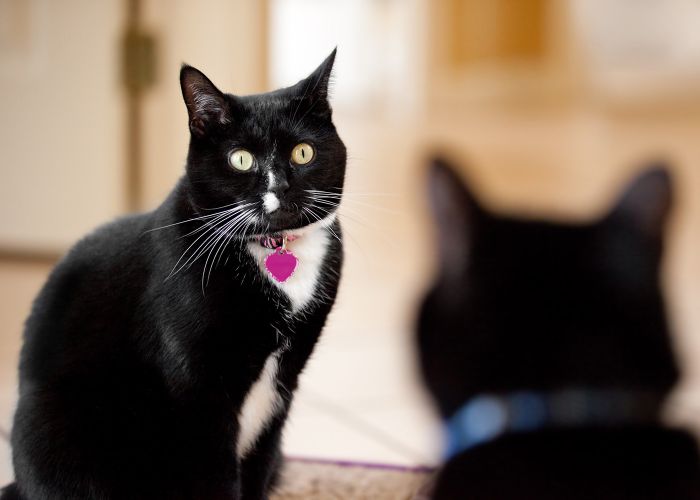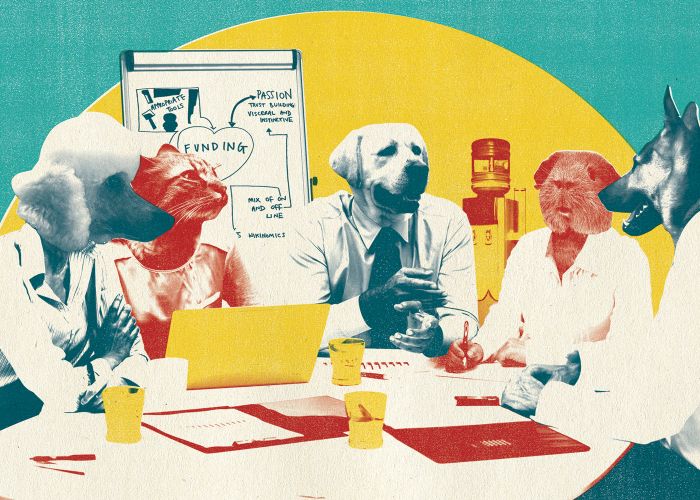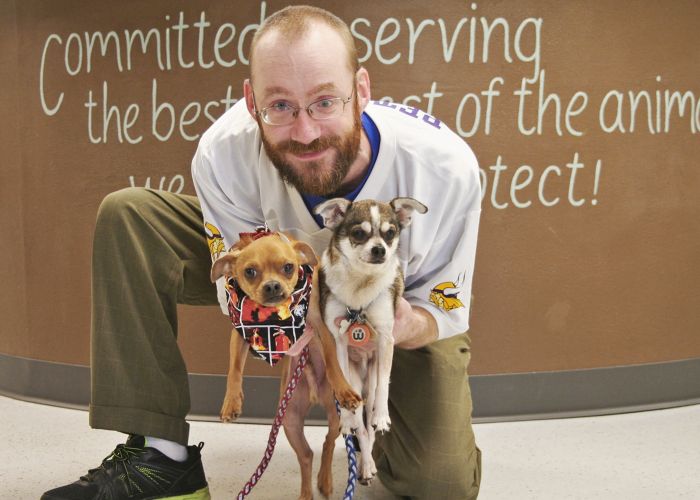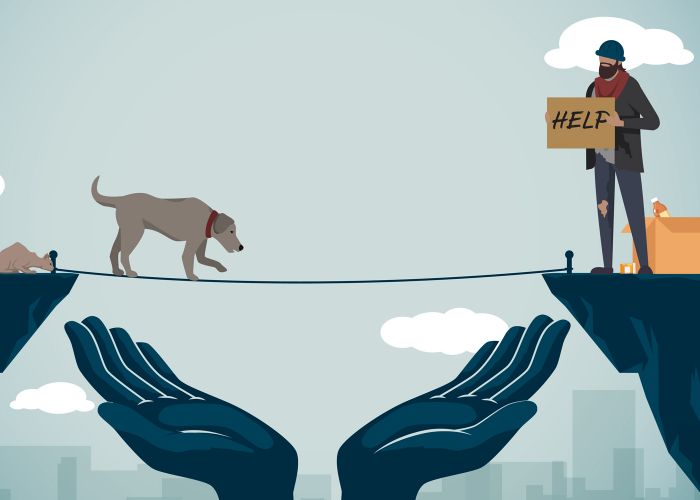Sending new bat signals
A Virginia shelter finds a better way to protect both animals and people
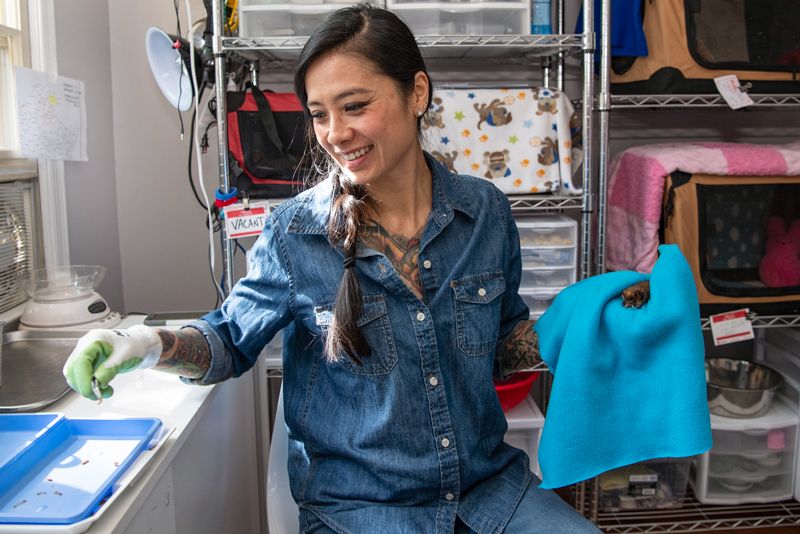
On a frigid day in 2012, a woman walked through the doors of the Animal Welfare League of Arlington, Virginia, with a big brown bat in a box. The bat was cold, dehydrated and—unbeknownst to him—about to launch a revolution in the way the organization handled animals of his kind.
“I’ll never forget it,” says Kim O’Keefe, who was working as a kennel manager at the time. “[The woman] was just like, ‘I found it in a mulch pile, and I used gloves, and I’m bringing it to you to help it.’”
O’Keefe knew the drill: Any bat who came into the shelter was automatically euthanized. But her conscience rebelled. “This person went out of their way to do this. She took all the safety precautions, and for me to say, ‘Oh, well, we’re just going to euthanize it’—that gives people a bad impression of saving animals in the future. It’s like, ‘Well, then, who do I bring this animal to?’”
Looking at the shelter’s list of contacts, O’Keefe found the name of local bat rehabber Leslie Sturges and reached out for help. While delivering the bat to Sturges, she began learning from the expert. “And that’s when I realized that shelters are really behind as far as their knowledge of this animal,” O’Keefe says. At the time, AWLA was sending other rabies-vector species to rehabbers, but not bats. “For many years, there was this very outdated idea that bats just have rabies and it was just safer to euthanize them.”
“For many years, there was this very outdated idea that bats just have rabies and it was just safer to euthanize them.”
—Kim O'Keefe, licensed bat rehabilitator
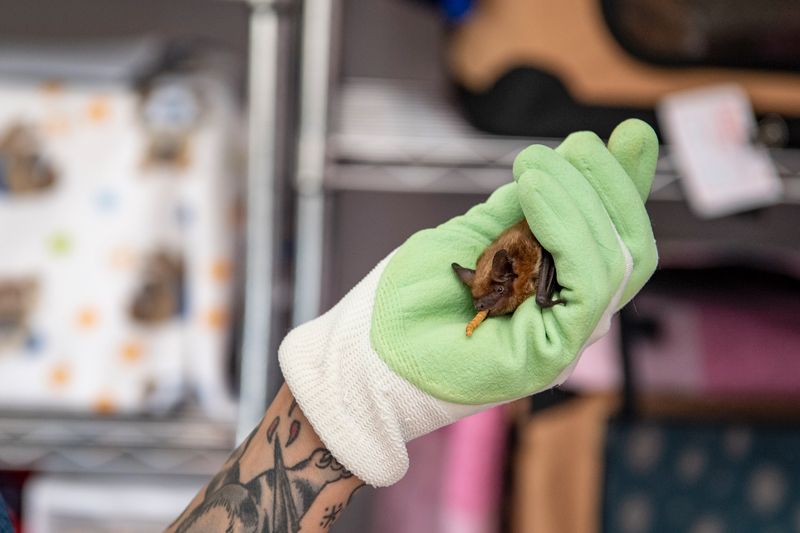
Though AWLA has long since amended its policy, the default response is still all too common among other organizations. Many order rabies testing for any bats found in homes—a process that requires killing them first—even when they’ve had no contact with people or pets. With 99 percent of bats in the wild estimated to be rabies-free, a significant number of these animals caught in the wrong place at the wrong time are dying for no reason. As the Centers for Disease Control and Prevention notes, “even among bats submitted for rabies testing because they could be captured, were obviously weak or sick, or had been captured by a cat, only about 6% had rabies.”
Euthanizing bats indiscriminately only exacerbates the growing threats they face, including habitat loss, climate change, and especially white-nose syndrome, a disease that has killed millions in the past decade. Under AWLA’s more progressive policies, even bats found in structures—like the ones officers rescue from apartment building stairwells and people’s kitchens—are given a chance at recovery, and many more are released back into the wild. That’s largely thanks to the efforts of chief animal control officer Jennifer Toussaint. Building on the momentum that O’Keefe had started, she began working with Arlington County’s public health staff in 2013 to develop new protocols for evaluating potential human exposure to rabies. Through close collaboration, Toussaint and clinical program manager Tracy Hess found a way to meet the dual goal of protecting people and animals. “If there’s any doubt, we’re going to test an animal,” says Hess. “But we work really hard to make sure we can rule out any doubt.”
Under AWLA’s more progressive policies, even bats found in structures are given a chance at recovery, and many more are released back into the wild.
The partnership began when Toussaint saw a need to corral the haphazard phone calls and endless email threads flying back and forth between animal control and public health staff about potential rabies cases. Knowing how busy the nurses were, she kept a key question in mind: “How can we make this easier for you?” At the time, animal control’s standardized report formats were onerous and filled with jargon, so she and her team created a simplified system for correspondence.
In the process, they also looked through months of emails and identified weaknesses in the exchanges: What questions were the nurses repeatedly asking? Where were the consistent gaps in reporting from animal control? From there, animal control and public health staff combined the results of their inquiry with CDC recommendations to develop new guidelines to help officers ask detailed questions on scene: Were you awake at the time that you first saw the bat? Do you have children? Where is their bedroom located? Were the doors open? Do you have a pet?
“So really it’s empowering the officers to do some investigative work on an exposure,” says Toussaint. A shared spreadsheet, updated in real time, helps nurses and officers track bite and exposure cases.
The results are lifesaving: In 2011, AWLA euthanized 25 bats and sent only four to wildlife rehabilitators. By 2017, the numbers had effectively flipped; seven bats were euthanized, while 21 went to rehabbers.
99% of bats in the wild are estimated to be rabies-free.
The streamlined protocols—and the trusting relationships that have resulted—are critical in emergency situations with other rabies-vector species too. Late one evening, Toussaint told a woman calling about a sick baby raccoon to bring in the animal. After noticing he was partially paralyzed and unable to focus, Toussaint quickly discovered a worrisome backstory: The raccoon had bitten the woman on the lip while she’d made kissy faces at him. Toussaint and the on-call county nurse immediately coordinated emergency care for the woman, who likely would have died otherwise. “The disease doesn’t have to travel very far from your lip to your brain,” says Toussaint, “and that raccoon did come back positive.”
On the sad occasions when AWLA has to perform a euthanasia that could have been prevented, animal control officers and nurses team up to educate the public. After teachers allowed students to pass around a baby raccoon they’d found at a school, Hess and Toussaint organized a joint presentation about rabies and living safely with wildlife. They’ve also partnered at health fairs, at emergency response events and on targeted outreach campaigns—an arrangement that “has allowed us also to speak with the same voice when we’re talking to residents,” says Hess.
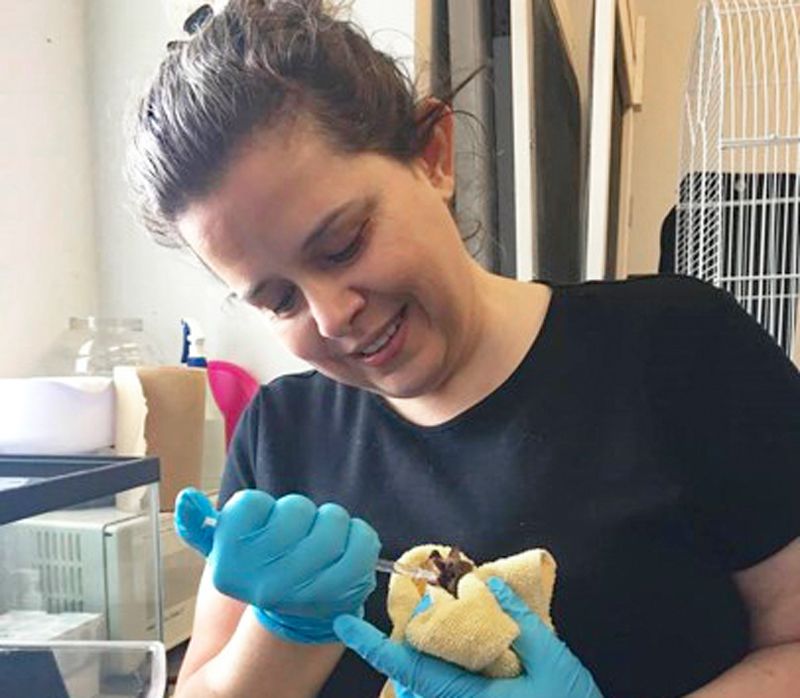
Though she left the shelter within a year of her revelatory experience, O’Keefe is now a licensed bat rehabilitator and has maintained good ties with her former employer, taking in bats as well as foster puppies and kittens. She senses the enthusiasm about bats and other wildlife when she visits the shelter—and is grateful to Toussaint for taking the organization’s efforts to the next level. From a rehabber’s perspective, “it gives me some peace of mind,” she says. “Knowing that somebody is willing and wants to do more, to do better—then, yes, of course we’re going to take the time to go up there and help them make that effort and support them as well.”



